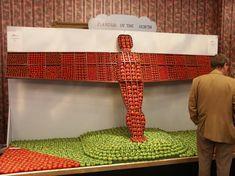
The innovation of the early part of the 21st century will be the closed greenhouse, predicted Renee Heller of Dutch organisation Ecofys at Tomato Conference 2003.
Trials of the closed greenhouse, which uses a rapid response control system to optimise CO2 levels, temperature and humidity evenly throughout the greenhouse, while simultaneously conserving energy, have had impressive results.
The trials were carried out in Naaldwijk, Holland, over two days, and a simulation of the prospective outcome of the work showed a 22 per cent rise in yield, a reduction of 80 per cent plus in the need for chemicals, a 20 per cent reduction in energy usage and an improvement in working conditions.
The test also showed that 45 per cent of the solar energy collected would be sustainable. A heat surplus was generated - the energy saved from 1ha of closed glass, said Heller, would be sufficient to heat 3ha of conventional glass - another energy saving of 30 per cent.
"If we are to pursue energy saving programmes, the closed greenhouse is probably the best answer," she said. "The work we carried out was on 1,400sqm of Aromata tomatoes and we worked to control points set by the company PPO to exercise precise control over the internal climate of the greenhouse." CO2 levels were controlled at 1,000ppm throughout, relative humidity was kept at 75-85 per cent and the temperature was maintained at below 27°C at all times.
Research into the system continues, with the primary aims to make all energy renewable and eradicate the need for chemicals. Payback time at the moment is around seven years, said Heller, but reliable commercial feedback will help to increase efficiency and reduce costs.
The first commercial project is due to begin in Holland in December and Ecofys is also developing the concept for use on other crops.



